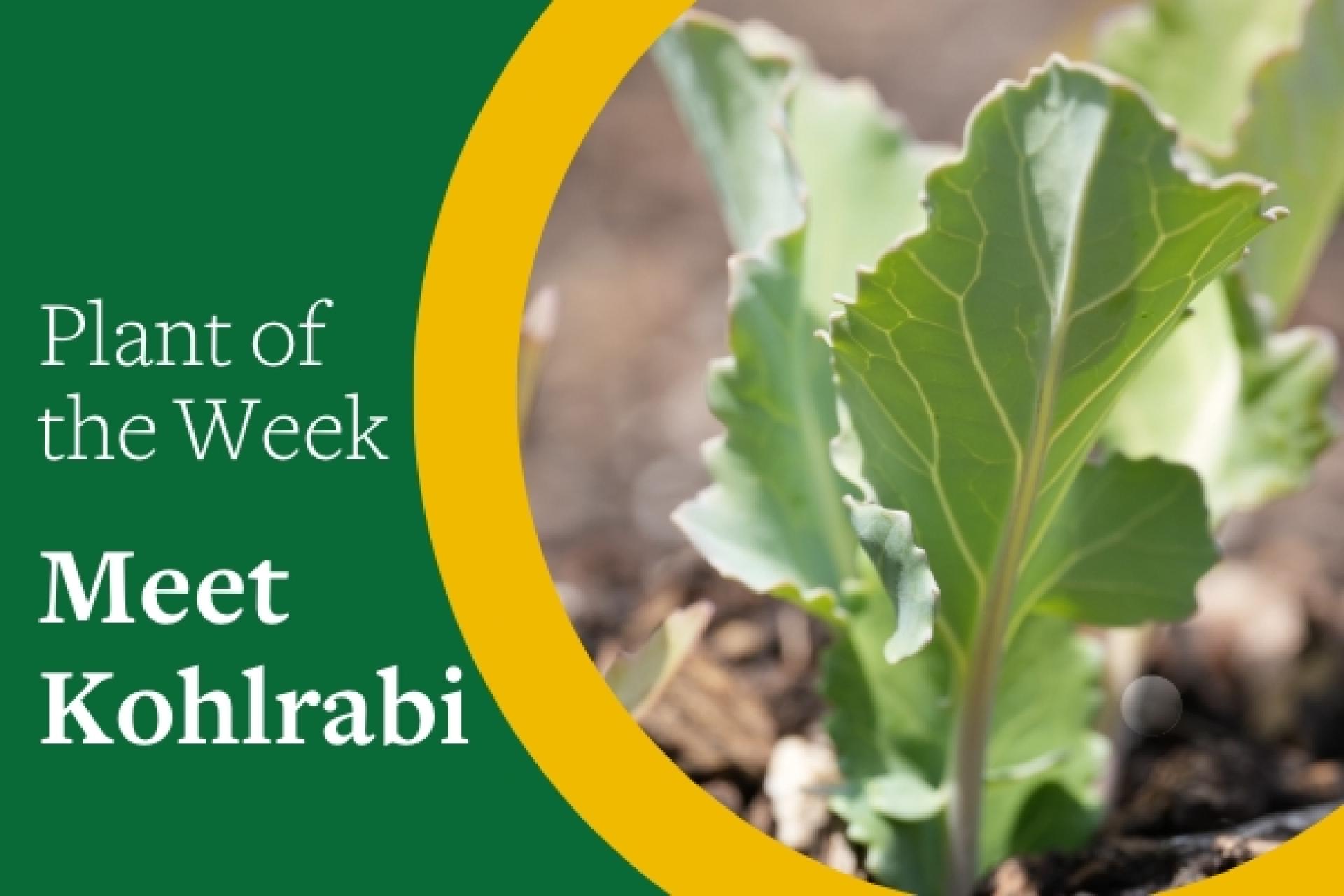You are here
Meet Kohlrabi: Like an Upside-Down Octopus
Meet Kohlrabi: Like an Upside-Down Octopus
By Ruth Hanavan
Spring at the Berkshire Botanical Garden allows visitors to see both trees and flowers at the very beginning of the blooming season and observe the new growth in all of the gardens. In addition to the display gardens found on the north side of the garden, BBG also cultivates vegetables in the Edible Garden adjacent to the Fitzpatrick lawn. On a recent walk through the Edible Garden with horticulturist Kessa McEwen, we discussed the tiny sprouts of vegetables that were just becoming visible, poking through the soil.
Planning for the BBG vegetable garden begins a year in advance, Kessa explained, meaning that even as this year’s crop is beginning to grow, the garden is being planned for next year. The Horticulture team selects specific seed varieties and lays out the plan for the garden. In February, during the deepest part of our cold Berkshires winter, the team will propagate the seeds in the Lexan greenhouse, and wait for the last frost of the season in May, when all of the small vegetable plants can be safely transferred to the garden. The garlic, of course, had been planted in the fall, and on this recent chilly spring day, some of the vegetable perennials, like Jerusalem artichoke and asparagus, are already growing as well. The cold, hardy varieties of vegetables are well on their way too, including sugar snap peas, broccoli raab, collard greens, Swiss chard, celery, bok choy, and Kessa’s favorite, kohlrabi.
“Kohlrabi is so fun,” she raves. “It’s kind of a lesser-known vegetable, also called a German turnip, or a cabbage turnip. It kind of looks like an upside-down octopus, or an octopus doing a headstand.”
In the kohlrabi patch, long, leafy greens already stand about 6 inches out of the soil. The leaves are light green and edible. By late July/early August, the root of the kohlrabi, which can be purple, green or white in color, will poke out of the soil when it’s ready to be harvested, and the leafy greens will extend a foot above ground. Kohlrabi requires about 85 days to harvest. At BBG, the horticulture team prefers a larger variety of kohlrabi, “Kossak White,” that will grow to be about 8 inches when ripened — about the size of a softball.
Kohlrabi can be eaten raw or cooked, but Kessa prefers it raw, in a slaw “with sesame oil and some sesame seeds sprinkled on top. Some people say it tastes like broccoli stems.”
For more fun facts about kohlrabi — and all the vegetables in the Edible Garden — stop in and talk to one of our horticulturists!
Help Our Garden Grow!
Your donation helps us to educate and inspire visitors of all ages on the art and science of gardening and the preservation of our environment.
All donations are 100 percent tax deductible.


